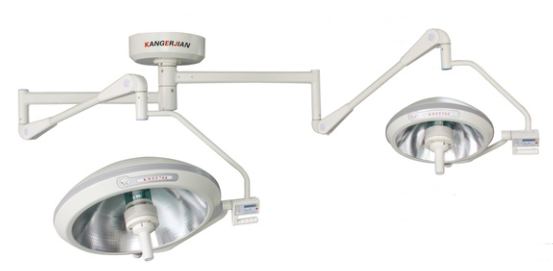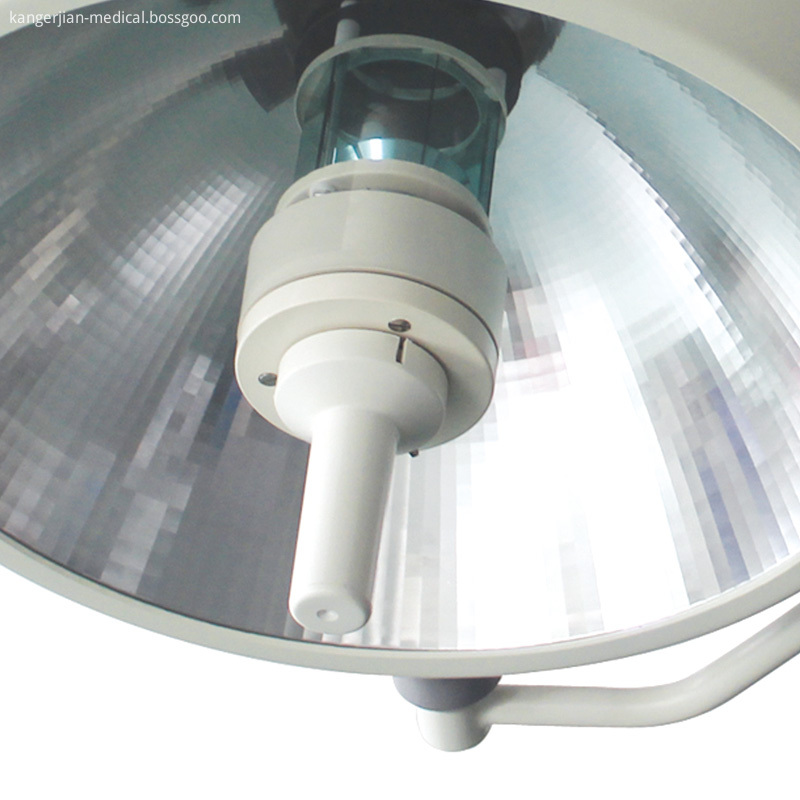Infectious bronchitis is a long-term, acute, highly contagious disease caused by the infectious bronchitis virus that can cause disease in chickens of different ages. Infectious bronchitis has respiratory, renal, and reproductive-type three clinical manifestations, of which the most harmful to the poultry industry is kidney-type bronchitis. Kidney-shaped infectious bronchitis only infects chickens, broilers are particularly susceptible, and other poultry are not infected. There are many rainy seasons and cold seasons. It is characterized by regional distribution. Susceptible age is between 15 and 50 days of age, especially 3 to 6 weeks of age, which is almost the same as infectious bursal disease. First, the symptoms At the beginning of the chicken's illness, the spirit was poor, drinking water increased, and the white urate in the feces increased significantly. Some chickens had mild respiratory symptoms. The cough, runny nose, panting, tracheal secretions were found at the end of the blood. A few days later, the symptoms were obvious. The chicks stood neck-down, loose feathers, drooping wings, closed eyes, drowsiness, back feathers, and half tails. Some curled up in bed and drove away; frequent urine diarrhea, excrement was watery or milky milk; some were white and green diarrhea, white feathers were stained by white excrement around the anus, and there was a large amount of urate in the stool. The frail chicken died of exhaustion and died. The chicken suffered from acute death, struggling at the time of death, two-winged flapping, lateral movement and arc motion. In chickens, mild respiratory symptoms were observed, egg production decreased significantly, soft-egg and malformed eggs increased, follicles became soft, congestion and hemorrhage. Healing chickens, broiler growth retardation, laying chickens delayed production time. Although some feathers were clean and smooth, the diet was normal, and the reaction was sensitive, but the crown was atrophic and the chicken pelvis was closed; the cock could not be bred and eventually lost its productive performance. Second, pathological changes The crest was dark red in the crest, yellow in the crotch and legs disappeared, and the toes dried up like sticks. The air bubbles were cloudy, the intestines were empty, the mucous membranes were astringent, and the rectum was filled with lime-like dilute feces. In severe cases, the heart and liver surface were covered with white clouds. Renal swelling, hilly, red and white, and crisp as mud, ureteral atelectasis, other organs are not significantly fatal lesions. Healed into chicken, cock testis asymmetry, hen follicles are mostly less than miliary, individual, such as corn kernels, fallopian tubes were cord like, affecting the egg production rate. The pathological changes of renal infectious bronchitis are mainly concentrated in the kidneys. The kidneys are swollen and pale. The renal tubules are betel-like patchy due to the accumulation of urate. Both ureters became significantly dilated due to deposition of urate, thickening and whitening. In chronic cases, the kidneys are discolored, and yellow-white urate nodules filled with miliary-sized granules in the renal parenchyma sometimes reach the size of soybeans to broad beans (kidney stones). In some cases, one or both ureters are completely blocked by white urate, forming ureteral stones and urinary retention. Occasionally, uric acid salts accumulate on the surface of the pericardium and liver, which may be a layer of white frost, which is visceral gout. Cloaca accumulates white lime creamy urate excretion. Third, the lesions The severity of nephropathy depends on 6 main factors: 1 strain nature; 2 maternal antibody levels; 3 sex (male mortality> female); 4 nutritional status (high protein feed fed chicken mortality> low protein feed Feeding chickens, which are related to the level of uremia; 5 strains, the highest incidence of broilers; 6 the age of infection (the lower the age of onset, the higher the mortality rate). Broilers using the highly virulent IBD vaccine have a higher incidence of renal infectious bronchitis. Fourth, the typical course of disease The typical course of renal infectious bronchitis can be divided into two stages: Stage 1 (around 3 weeks of age) has mild respiratory symptoms that are often overlooked and disappear after 2 to 4 days; Stage 2 is 7 to 10 after onset The peak of death occurred around the age of 4 weeks. The symptoms of the chicken group suddenly increased, the spirit was depressed, and the anorexia was disorientated. The gray-white loose stools or white mushy stools were discharged, and sometimes the water samples were diarrhea, and the water was severely dehydrated. The paws were dry. The entire course of 21 to 25 days, the mortality rate of 10% to 30%. Generally after the age of 6 weeks, the condition slowed down and the mortality rate dropped below 1%. However, the growth was significantly slower and the feed conversion rate decreased. Fifth, pathological diagnosis From the age of onset, white loose stools, severe dehydration, plus severe nephropathy and urate precipitated spotted kidneys found at the time of necropsy, can be initially diagnosed. Renal infectious bronchitis lacks chest and leg muscle hemorrhage, and there is no lightning-type disease and spike-like death, which is generally not confused with infectious bursal disease. Although some strains of bronchitis can cause edema and a certain degree of bleeding in the bursa of Fabricius, the authenticity of the serum of the bursal tissue of the bursae and infectious bursal disease can be used to identify authenticity. Sixth, prevention measures 1. Prevention In addition to the biosafety control and isolation and disinfection of chicken farms, the main focus is on vaccination. For broiler chickens and broiler breeders, if there is a local outbreak of infectious bronchitis or a threat of an outbreak, besides the immunization of a common type of pass-through vaccine, a good-quality kidney-type infectious bronchitis vaccine should be selected. Immunity. 2. Treatment 1 Block the infected chicken house, prohibiting unrelated personnel from entering the house and preventing the disease from spreading on the site. 2 Strengthen feeding and management, adjust the microclimate of the chicken house, and strengthen ventilation and ventilation on the basis of heat preservation. Reduce the breeding density and increase the multi-dimensional content of the feed. The protein in the feed should be 14% to 15%. During the onset of the chicken, 50% glucose or 5% brown sugar was added to drinking water. 3 Strengthen the disinfection work during the onset. The chicken house is sterilized once a day and the field is disinfected twice. The disinfectant can be used alternately with peracetic acid, 100 toxins, Nongfu and Difu. 4 Kill chicken kidney tissue inactivated seedlings in their own chicken farm. The kidneys of the chickens that died of the affected chicken were crushed, diluted, centrifuged, and inactivated to make the whole-group injection of the inactivated tissue vaccine 7 to 10 days before the susceptible age of the chickens, which can effectively prevent the occurrence of the disease. 5 Kidneys from dead chickens in their own chicken farm were inoculated with 9-day-old non-immune chicken embryos by routine treatment. After 48 hours, allantoic fluids were collected and inactivated to make chick embryos 7 to 10 before the susceptible age of chickens. Days of full-group injection can prevent this disease from happening. 6Immunovaccine Mâ–³5 vaccine produced by Intervit company was used for immunization. IBMâ–³5 freeze-dried vaccine showed cross-protective effect on most IB-different strains isolated from IB kidney-type chickens. .
1.ZF series of reflective shadowless lamp is widely used in various occasions operation lighting needs, is the ideal lighting equipment of modern operation room.
2. Full close streamline lamp body design completely meets the demand of the sterilization and high standard of laminar flow purification in operation room.
3. Adopting more than 5280 slices of reflection mirror, guaranteeing 1200 mm lighting depth.
4. Special design of color temperature compensation provides closer to that of natural sunlight and helps the doctor to distribute operation parts clearly and accurately.
5. The back-up battery will start work within 0.2 seconds automatically in case the main battery is damaged,ensuring the continuation of surgical operation. There`s failure indication in the handle control panel, to recommend the bulb to be changed after operation.
6. detachable handle jacket ,can be used for high temperature (≤134℃)sterilized.
7. Digital-control circuit offers many functions, with 10 segment brightness selection stepless lighting regulation, brightness memory, low voltage
start-up and power on self test etc.
8. The life-span of OSRAM halogen bulb is up to 1500 hours; the bulbs can be changed easily.
9. Germany ORSAM lamp socket,thermostability
10.Balance arm can be optional Germany imported or domestic.
11. mould Die-casting Eight edge type Revolving arm
Halogen Operating Light,Halogen Light Bulbs,Halogen Surgical Operating Light,Halogen Surgery Light Shandong Kang'erjian Medical Technology Ltd. , https://www.operatingtable.nl
7 There are currently no specific therapeutic drugs for affected chickens, mainly symptomatic treatment, promotion of rehabilitation, and reduction of losses. Drinking water, add 5% glucose and 0.5% to 1% soda solution for 3 days, and 0.2% to 0.3% of renal swelling antidote. Strengthen the body resistance, increase the amount of multi-dimensional feed, especially to add the amount of Vc. To promote the excretion of urate, restore the physiological function of the kidney, can choose Shen Ning, Kidney Po, kidney swelling Ling and other drugs. In the feed, 0.1% of Viroidal powder is added per kilogram of feed to inhibit the infectious bronchitis virus. Add rehydration salts to the drinking water of the flock to supplement the liquid to relieve dehydration. To prevent the secondary infection of fungal pathogens, early use of broad-spectrum antibacterial drugs, according to the results of drug susceptibility testing, use the best antibacterial drugs, according to the instructions with the treatment.

